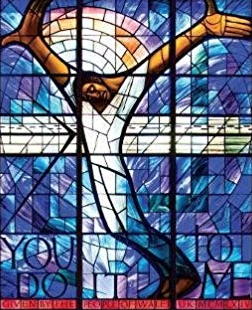In preparation for Easter I’ve been reading a book that would normally be a little off-piste for me. It’s by American Anglican theologian Fleming Rutledge. (I did say this was off-piste!). This book took her 20 years to write and has been described as the second part to “The Cross” by John Stott. I have to say I’m not sure that it is “that good”. The book is called “The Crucifixion: Understanding the Death of Jesus Christ”.
At times it’s quite an extraordinary read … it’s written both powerfully and creatively. By that, I mean that she uses words to paint images and then brings them to contemporary meaning and application. At times it’s made me just stop reading and take in the enormity of the task Jesus had, as well as the beauty of how Jesus did it.
What I particularly appreciated in this book was the sheer breadth undertaken. For example, where most theologians trace one biblical motif to the cross (and are pretty satisfied with that) – The Lamb motif for example, or the goat motif that we discussed on Good Friday. Rutledge proposes eight. She then proceeds to write about them in as they wind through the pages of Scripture.
And she does so using the English language as a symphony orchestra or paint palette – conjuring up images and pictures and, at times, breathtaking, insights into the cross of Jesus.
The eight motifs that she focuses our attention are broad but contain depth:
- Passover and Exodus
- Blood sacrifice
- Ransom and redemption
- The Judgement
- Christus Victor
- Descent into hell
- Substitution
- Recapitulation
Running through the eight motifs are three simple messages:
- There is sin and guilt for which atonement needs to be made.
- There is slavery, bondage, and oppression from which humankind needs to be delivered.
- Jesus alone is the answer to both
Before I close let me say that this book isn’t perfect – far from it. Some of her biblical exegesis is stretched and some of her interpretation is “left field”. Actually, there is a lot I’d disagree with Rutledge over but this book is deep, insightful and profound – definitely worth a read.


Leave a Reply